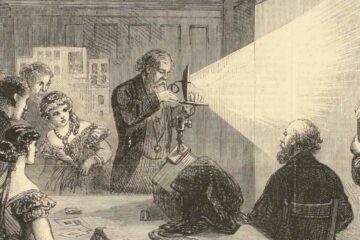In 2018, Gerard Lange, Associate Professor of Art & Design at Barton College in North Carolina, began publishing a quarterly printed journal that features the work of photography educators and students, titled Focal Plane. The purpose of this publication is to highlight the work that teachers perform both in and outside of the classroom as well as to recognize students who demonstrate potential for careers in the discipline. Photography faculty have an article on their work, another on one of their students, and finally one about a teaching experience. Two-thirds of the publication is devoted to publishing student work, which is a key emphasis of the work.
I was pleased when Gerard and the art students at Barton College asked if I would write an introduction about scientific photography for their April issue.
The piece I wrote is about how the term “scientific photography” often invokes a familiar list: dazzling iconic photographs of scientific phenomena – stars, x rays, bacteria, the moon. Scratch beneath the surface, however, and a more complex picture emerges of the subjects for the study of science and photography.
It was enriching to collaborate with Focal Plane because they created space for one of my undergraduate students, too! In the same issue of Focal Plane, one of my Wesleyan University students, Azher Jaweed (’14), who was interested in museum studies, published his first article: an interview with the brilliant Dr. Chitra Ramalingam about her work as an Associate Curator of Photography at the Yale Center of British Art and Lecturer in the History of Science and Medicine at Yale. Her research interests include 19th century Victorian visual culture and science, the visual complexity of electricity and the manner by which British scientists grapple with its potentialities, and the history and theory of early photography.
Dr. Ramalingam’s interview with Azher is wide-ranging and fascinating! The collaboration gestures toward the conversations, often informal and unrecorded, that characterize the knowledge/teaching space that we all occupy.
A pdf of the Focal Plane Intro and Interview with Dr. Ramalingam can be accessed here.


0 Comments